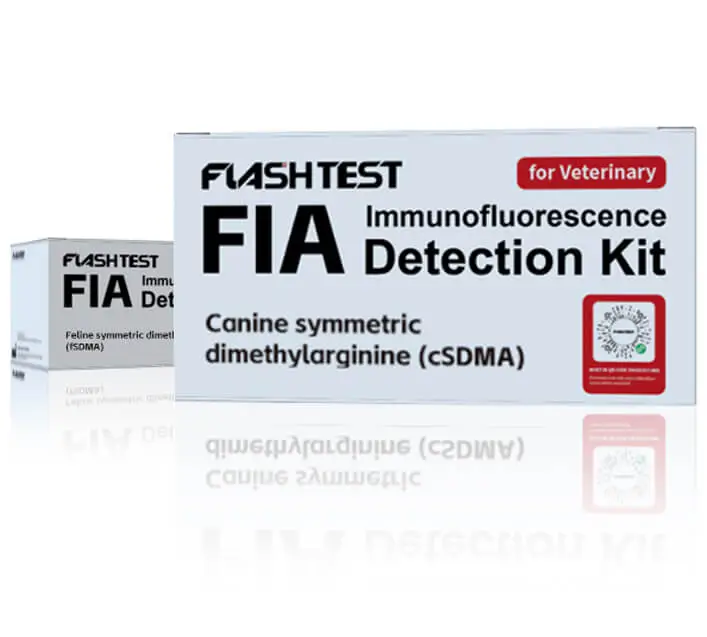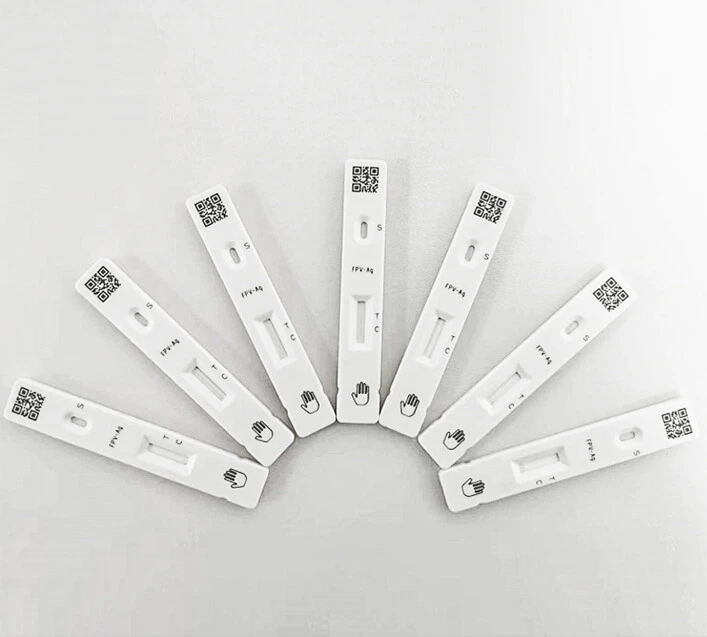- +1-707-722-7066
- care@flashtestbio.com
English

Fia test KIT is commonly employed for various purposes in veterinary medicine, such as the diagnosis of infectious diseases, detection of parasites, and monitoring of vaccine efficacy in pets. FIA provides rapid and sensitive results, allowing veterinarians to efficiently diagnose and manage health conditions in animals.


Sensitivity: FIA for antigen detection in pets offers high sensitivity, allowing for the detection of low levels of target antigens. This enables the early identification of diseases or infections in pets, facilitating prompt treatment.

Speed: FIA provides rapid results, typically within minutes. This quick turnaround time allows veterinarians to promptly diagnose pets and initiate appropriate medical interventions.

Specificity: FIA is highly specific, accurately identifying and distinguishing target antigens. This specificity reduces the chances of false positive or false negative results, ensuring accurate diagnosis in pets.

Multiplexing capabilities: FIA can be designed to simultaneously detect multiple antigens in a single test. This capability allows for the efficient screening for multiple diseases or infections in pets, saving time and resources.

To use FIA testing in pets, collect samples such as blood, urine, or swabs. Dilute fluorescently labeled antibodies specific to the antigen in a buffer. Coat a microplate with the diluted antibodies, then add the pet samples to the wells and incubate. Wash the plate to remove unbound material. Add a labeled secondary antibody that binds to the captured antigen and incubate again. Wash to remove excess secondary antibody. Use a fluorescence plate reader to measure fluorescence intensity, which correlates with antigen amount. Analyze the data using appropriate software or tools to determine antigen presence and concentration. Follow the manufacturer's instructions provided with the kit for specific protocols.

FIA testing in pets plays a crucial role in the diagnosis and monitoring of various diseases and conditions. By utilizing fluorescently labeled antibodies, this technique allows for the detection and quantification of specific antigens in samples from pets.
One of the main advantages of fluorescence immunoassay is its high sensitivity and specificity. The labeled antibodies bind specifically to the target antigen, resulting in a fluorescent signal that can be easily measured and analyzed.
Furthermore, fluorescence immunoassays can be performed on a variety of sample types, including blood, urine, feces, and swabs.
By utilizing FIA testing, veterinarians can quickly and accurately diagnose diseases, monitor treatment efficacy, and detect early signs of infections or other health problems in pets.

Get In Touch With Us Now!
Tel:
+1-707-722-7066Email:
care@flashtestbio.comAdd:
Blk A4 - F2, Liyuan Development Zone, Binhu District, Wuxi, China